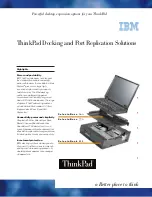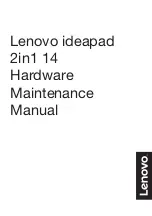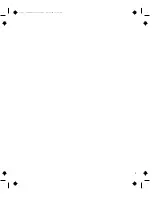
Glossary
Terms
258
application
— A computer program that you use to perform tasks of a
specific type. Applications include word processors, spreadsheets,
and database management systems. See also
program
.
B
backup
— A
copy of a file, usually on a removable disk, kept in case the
original file is lost or damaged.
basic input/output system (BIOS)
— See
BIOS.
baud rate
— The speed at which a communication device, such as a
printer or modem, transmits information. Baud rate is the number of
signal changes per second (not necessarily the same as bits per
second). See also
bits per second
.
BIOS (basic input/output system)
— Basic instructions, stored in read-
only memory (ROM), containing the information the computer
needs in order to check hardware and load the operating system
when you start up the computer.
bit:
— Short for “binary digit.” A bit is the smallest unit of information
used by a computer. A group of eight bits is a byte. See also
byte
.
bits per second (bps)
— A way of measuring the speed at which
information is passed between two devices. The basic measure used
in modem communications, bps is similar, but not identical, to the
baud rate. See also
baud rate
.
boot
— To start the computer. The term “boot” originates from bootstrap
program (as in “pulling itself up by its bootstraps”), a program that
loads and initializes the operating system. See also
reboot.
boot disk
— See
system disk.
boot priority (startup sequence)
— The order in which the computer
accesses its disk drives to locate the startup files. Under the default
startup sequence, the computer looks for the startup files in the
diskette drive before checking the hard disk.
bus
— An electrical circuit that connects the central processing unit
(CPU) with other parts of the computer, such as the video adapter,
disk drives, and ports. It is the pathway through which data flows
from one device to another. See also
bus speed
,
frontside bus
.
bus speed
— The speed at which the central processing unit (CPU)
communicates with the other parts of the computer.
Summary of Contents for Portege 4000
Page 50: ...50 Getting Started Shutting down the computer Blank Page ...
Page 120: ...120 Power Management Using Standby Blank Page ...
Page 162: ...162 WinDVD Exiting WinDVD Blank Page ...
Page 188: ...188 Keeping Your Files Safe Hard disk drive passwords Blank Page ...
Page 226: ...226 If Something Goes Wrong Toshiba s worldwide offices Blank Page ...
Page 250: ...250 Blank Page ...
Page 254: ...254 Blank Page ...
Page 270: ...270 Blank Page ...
Page 278: ...278 Blank Page ...
















































